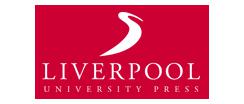- View more resources from this publisher
 Nuffield Foundation
Nuffield Foundation - View more resources from this publisher
 Liverpool University Press
Liverpool University Press
SPACE Project Research Report: Sound
The Science Processes and Concepts Exploration (SPACE) project research report on Sound was published in 1990 by Liverpool University Press. The SPACE research was conducted at two centres: at the University of Liverpool and King’s College, London, with Wynne Harlen and Paul Black as joint directors. Each centre took responsibility for research in particular concepts and for producing the report of the work. In the case of Sound, one of the first reports to be published, the research was conducted from Liverpool and the authors were Dorothy Watt and Terry Russell.
The research on the phenomena related to sound was conducted between March 1988 and June 1988. To guide the research, a list of related concepts was compiled. These ideas included, for example: sound is produced by a vibrating object; that it travels through a medium; the vibrations are picked up by a specialised receiver – the ear in land mammals; etc. For the first phase of the research activities for primary school students (aged 5 to 11 years) related to these ideas were compiled. Primary school teachers taking part in the project involved their students in these activities prior to the phase in which their students' ideas were elicited using a range of techniques including individual interviews by the researchers. The next phase was intervention in which four main strategies were used to enable students to develop their ideas. This was followed by further interviews so that pre- and post-intervention ideas could be compared.
The research report provides a large number of representations of students' ideas, both pre- and post-intervention, mainly through the students' drawing and writing and transcripts of their oral explanations. Tables summarising pre-intervention responses for the infants (5 -7 years, lower (7-9 years) and upper junior (9 -11 years) show how initial ideas changed with age. The changes pre-and post-intervention are also reported for particular ideas. Results showed that there were significant changes in the ideas students expressed about the aspects of sound investigated. Appendices provide full details of the activities, interview schedules, materials used in the activities and the classroom intervention strategies.
Contents
Introduction
1. Methodology
2. Pre-intervention elicitation work
3. Children’s ideas
Part 1: An informal look at children’s ideas
Part 2: Responses to individual interviews
4. Intervention
5. The effect of intervention
6. Summary
Bibliography
Appendices AI – AV
Show health and safety information
Please be aware that resources have been published on the website in the form that they were originally supplied. This means that procedures reflect general practice and standards applicable at the time resources were produced and cannot be assumed to be acceptable today. Website users are fully responsible for ensuring that any activity, including practical work, which they carry out is in accordance with current regulations related to health and safety and that an appropriate risk assessment has been carried out.
Downloads
-
Sound 13.88 MB




